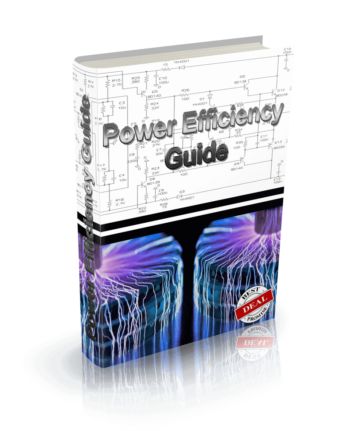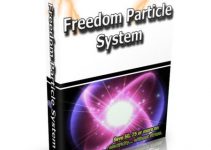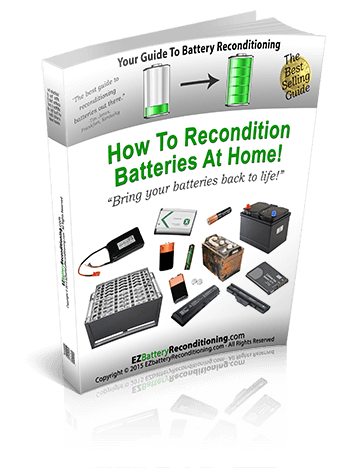It stands to reason that you just aren’t managing your power needs as you should. This is something that can be said for just about all of us. At the same time, this is something that is rapidly coming to the point of needing to change. To be sure, this is something that needs to be changed for the better, to be more specific.
This is where you will learn about the Power Efficiency Guide by Mark Edwards. This simple, extraordinary program in PDF is going to show you what’s going on with your current power situation. It is almost a certainty that you are going to want to start making some serious changes.
Luckily, this guide is going to show you how to do exactly that. Right from the beginning, you are going to find yourself with a home that is going to be absolutely transformed by the measures you are going to adopt. You are going to learn how to use your power to meet your power needs in the most efficient form possible.
This isn’t a guide that will demand a great deal of sacrifice either. By simply making some straightforward lifestyle changes, you will find yourself with a home that is more energy efficient than ever before.
Mark Edwards’ eBook makes it easy to enjoy the benefits of becoming energy efficient. In the first place, you are going to find yourself saving more money than you ever imagined. The month to month energy savings is going to prove to be impressive, to say the least.
At the same time, don’t lose sight of the fact that you are going to be embracing green-friendly measures, as well. If you want to be better in control of your situation, while also reducing your carbon footprint, this is the guide for you!
Saving on electricity is not just a whim, but a necessity! Electricity prices continue to grow, and we spend this resource out of habit mindlessly. You will be surprised, but the numbers in the accounts can be reduced by almost 2 times using small tricks.
It’s simple: to save money, you need to change your electricity consumption habits. In addition, it is important to ensure that everything in the house is rationally organized, that is, numerous electrical appliances need to be somehow streamlined. And each of them uses more rationally!
Light
Use daylight to the maximum! Natural light from the window not only saves your money but also helps to be in a good mood during the winter blues. It makes sense to change the thick summer blinds and dark curtains for light tulle. It’s great if you have several sets of curtains for all seasons. This changes the design of the rooms for the better and helps to use natural lighting wisely.
The workplace must be located in an area optimally lit by the light from the window, this will allow you to turn on the desk lamp later. Time to change light bulbs if you haven’t done it yet. Energy-saving light bulbs (LED) use 4 times less electricity than conventional incandescent bulbs! They serve at the same time much longer.
Turn off the light! This is a question of awareness – turn on your attention and check where now electric light is not really needed. In the evenings, it is easy to reduce the number of rooms with the lights on. It is enough just to occupy the whole family with 1–2 rooms instead of distribution throughout the apartment. A good idea is to use candles and special economical night-light fixtures when you can do without bright light. Evening by candlelight, even once a week will significantly reduce energy consumption!
Electrical appliances
Disconnect from the network appliances that are not involved at the moment. This applies to a computer, laptop, coffee maker, TV, speakers, all sorts of charge, hairdryer and other small electrical appliances. Perhaps this is one of the most stupid ways to spend electricity in vain!
Replace old appliances with new ones. Of course, this method does not suit everyone: it requires significant financial investments. But gradually it needs to be done! An old refrigerator, a TV, a washing machine and a dishwasher are a real glutton in electricity consumption. The new models of these household appliances consume significantly less precious kilowatts.
Tips to save energy in your home
- Always fill the dishwasher to the maximum before turning it on. The same applies to the washing machine.
- Do not open the doors of the electric oven very often during cooking. Firstly, it does not reflect very well on the dishes that you cook, and secondly, this is a sure way to release a certain amount of heat outside and spend more electricity.
- Open and close the refrigerator at lightning speed! To improve the tightness of the refrigerator, it makes sense to replace the gum on the door.
- Use household appliances sensibly! Where you can do without them – do it. Sometimes you can wash dishes with your hands instead of a dishwasher. A clothes dryer is beautifully replaced by a clothesline. The savings is to keep track of the little things.
House insulation
A well-insulated house will help keep the warm air inside during the cold season and cooled in the summer. Now a lot of companies offer services for home insulation with foam, tape and special insulation. Spending money on this procedure once, you do not have to pay for the additional electricity consumed by the heater.
If your house has autonomous heating, consider not heating the room too much. You can walk at home in a light sweater and sleep in the cool – it will save a lot of money. Sleeping in a cool bedroom prolongs youth and improves skin condition!
Hot water
Consume hot water 2 times less! Take a shower instead of a bath. Turn off hot water when it is not needed. Follow the way the water heater works if you have one: it should turn off and not waste electricity on the constant heating of water.
These tips will help save even the most desperate consumers of electricity! Be sure to tell your friends about them – help your loved ones save more money for themselves. I also recommend that you read Mark’s book if the savings on electricity for you is not an empty sound.





